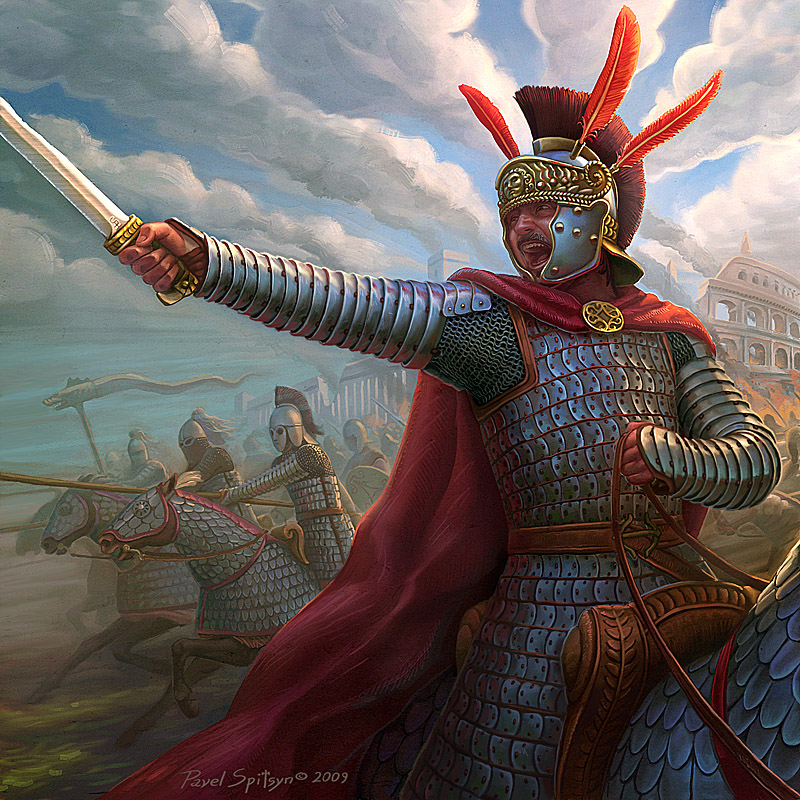
Originally Posted by
Renatus

Yes, let's get back to the topic.
This interpretation of the incident during the battle of Strasburg seems to be based upon an outdated edition of the Latin text. Up to about 1874, editors of the text rendered the relevant passage as "et consorte quodam per cervicem equi labentis pondere armorum oppresso", in which "labentis" related to the horse and "oppresso" related to the man. This is the text used by Yonge in his 1862 translation in the Bohn series. From 1910, editors seem to have changed this (doubtless for sound philological reasons) to "et consorte quodam per cervicem equi labente, pondere armorum oppressi", in which "labente" relates to the man and "oppressi" relates to the horse. This is the version followed by Rolfe (Loeb) and Hamilton (Penguin) in their translations. Thus, whereas the older editions had the man affected by the weight of his armour and the horse falling, the more modern editions have the horse suffering from the (probably combined) weight of armour and the man falling. This being so, the premise of recent posts on the subject has been rendered obselete by modern scholarship.
Lest this should simply transfer the "crushing" debate from the man to the horse, it is necessary to consider the meaning of "opprimo", the parent verb of "oppressus". This word has a variety of meanings, one of which is, indeed, "crush". However, this is principally in the figurative sense of "overpower" or "subdue". Other significant meanings are "sink", "overcome", "overwhelm", "weigh down", "wear out", "weaken" and "exhaust". Any of these could quite properly be applied to a horse (or, if one insists on following the old texts, a man) suffering from the effects of heavy armour and, probably also, heat exhaustion, without invoking the notion of his having been crushed to death. Indeed, the Latin of neither the old nor the newer versions says anything of anyone being killed or of a horse falling on its rider. These are simply glosses on the part of the translator.






 Reply With Quote
Reply With Quote




















